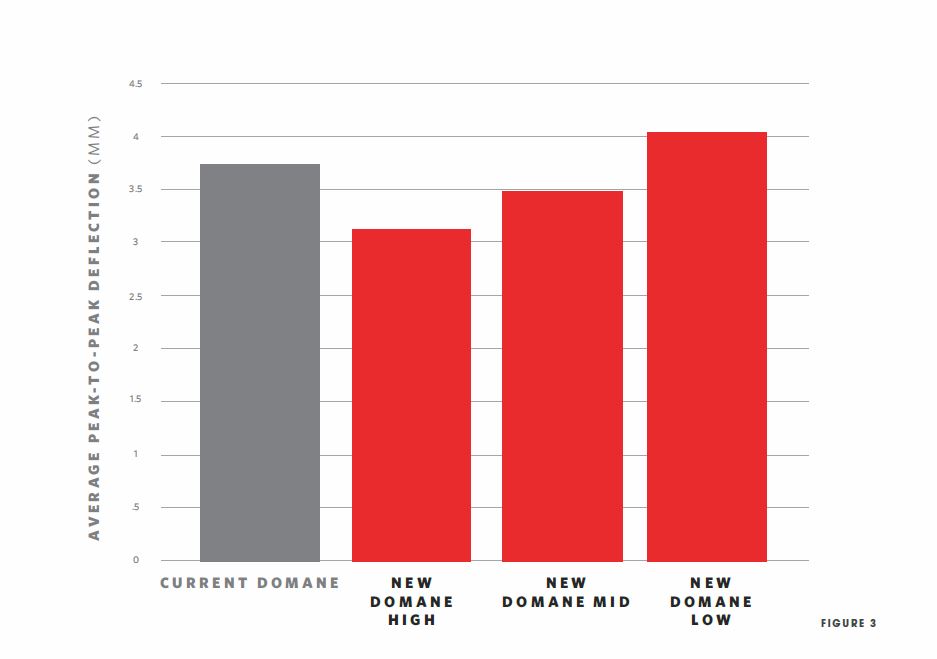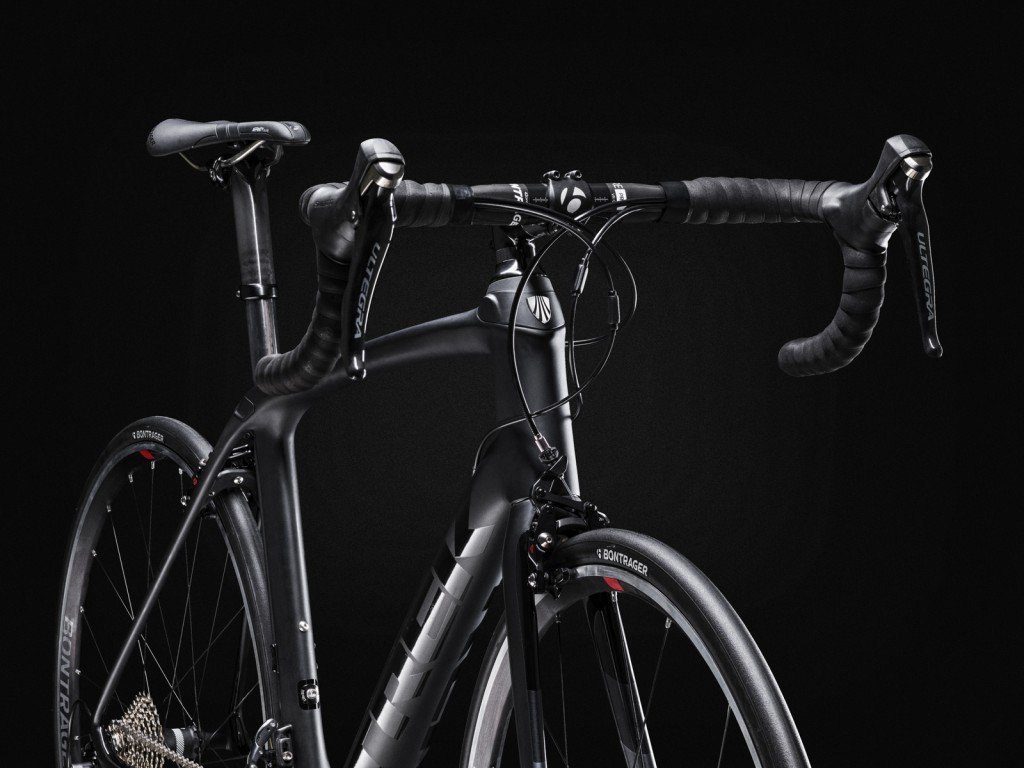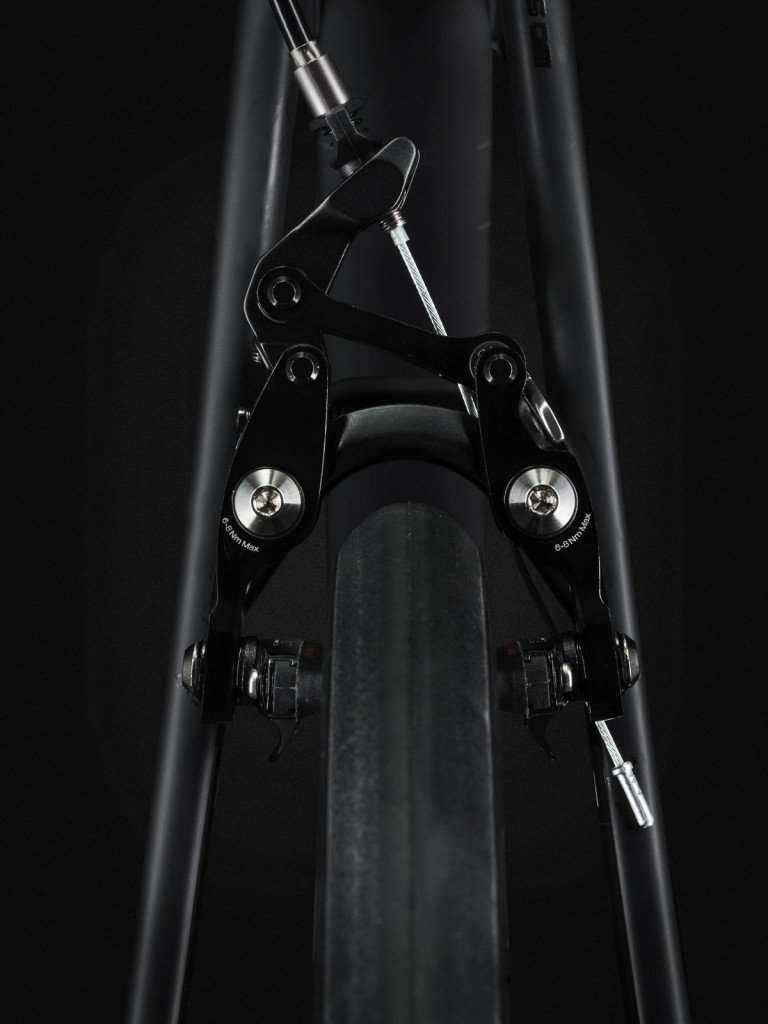If you follow road cycling you’d have to have taken a media break or been under a rock to have missed Trek’s announcement of a new and improved Domane SLR yesterday.
There’s been almost blanket media coverage for the last 24 hours. The chosen cycling media (sadly not me) have been reporting first rides in places like Flanders amongst others and almost every other road cycling site has been reporting about the bike, including this one!
The Domane SLR is a big deal. Trek are one of the world’s leading bike brands and one that has put more and more engineering brains into their product development during the last 5 years. Trek in my opinion are an innovator and the original Domane also happened to become the biggest selling road bike for the giant US company. So a new model for the biggest selling model of one of the world’s largest brand is interesting. Especially as it features some new innovations to move the Domane on for a next generation of customers.
Fabian Cancellara who has favoured the Domane since the beginning has already won Milan-San-Remo on the new bike and was a key participant in the development process.

Swiss rider Fabian Cancellara of Trek Segafredo Team, on his arrival to the 2016 Strade Bianche from Siena’s Fortezza Medicea to Siena’s Piazza del Campo, Italy, 5 March 2016. Strade Bianche is a 176km road race containing seven sectors of white gravel roads. ANSA/CLAUDIO PERI
Here are the key points about the Domane SLR:
- The IsoSpeed at the rear of the bike is now adjustable. This is a really interesting development. I rode the old Domane, which was a fine bike but felt a little over engineered for my low weight (and low power), tuning the ride comfort at the rear would have been very appealing and I think will help people tune the comfort to their own weight/style. It also means you can stiffen up the bike for smooth roads and soften it for rough – potentially maximising performance.
 Trek say this new slider based design offers an extra 14% compliance over the original Domane on the softest setting
Trek say this new slider based design offers an extra 14% compliance over the original Domane on the softest setting
- There’s now Isospeed at the front of the bike – which adds an extra 10% compliance at the front. It’s the same principle as the rear and allows the fork steerer to move in the headtube to give 10% more compliance than the orginal Domane. This was an area the old bike was criticised for in some reviews – that the front felt harsh compared to the rear. My view was that was overstating it a touch as the front was still smooth riding relatively speaking but this new innovation should help make the front and rear of the bike more balanced over rough ground.

- There’s a new IsoCore handlebar which increases vibration damping by 20% over a normal carbon bar. It’s an OCLV carbon bar with relatively long reach 93mm and a compact 123mm drop and weighing around 250gms depending on width. The bar features replaceable IsoZone padding to help deliver the vibration reduction.
- You can get the Domane SLR in either caliper brake (direct mount) or disc brakes (flat mount) but there’s a 0.8kg weight penalty for disc brakes. For my current weight the impact on overall bike and rider weight is around 1% extra for the disc version – so while it feels more when you pick it up – you’re not going to notice that difference so much when riding.
- The frame weight stays the same – even with the new IsoSpeed designs
- Wider tyres clearance but still with mudguard/fender mounts. You can now officially run 28mm tyres on the non-disc bikes or 32mm on the disc versions. Early reports suggest you may even fit wider if you want to depending on the tyre/wheel rim combination you’re using. The switch to direct mount brakes is said to have helped the caliper braked bikes run wider tyres.

- Disc brake bikes change to Shimano’s new flat mount system and their recommended 12mm front and rear through axle, which should be a tiny bit less stiff than the previous 15mm front and rear (which was super stiff). This is on-trend for the new year but don’t worry about it if you’re running the old one – the other standards will continue to be supported.
- New control center under the front bottle cage for Di2 Control module. The new rear IsoSpeed design means you can’t run an internal Di2 battery in the seat tube. Trek have worked around this to lift the control module idea from the new Madone and bring it to the Domane SLR.

- Geometry – available in Race Shop (pro) and Endurance (normal people) geometries as before. The pro endurance geometry features a longer wheelbase, lower bottom bracket and shorter head tube length to give a more aggressive posture. The standard Endurance geometry should enable most people to get a good fit for all day riding.
All of these changes take an interesting and successful bike to the next step in its evolution. I think these look like more than marginal gains and to me the Domane SLR looks like a really interesting bike. It’s an engineering heavy design with the front and rear IsoSpeed, when most other companies seem to focus more on carbon layups and tyre widths than physical engineering (as a generalisation).
The ride reports I’ve spotted seem to be suggesting this bike is a step forward and I hope at some point to be able to try one myself.
If you own an original Domane and are happy with the comfort and ride quality, there’s probably no need to upgrade – if you were thinking of a smooth riding bike for rough roads, this ought to go on your short list if the budget works for you. In the UK, with our roads continuing to deteriorate, bikes like the Domane SLR could help you continue to enjoy riding regardless.
Speaking of budget, the new Domane SLR range comprises of:
Domane SLR 6 £3,600 (USD 5,000) 7.46kg, mechanical Ultegra, Bontrager direct mount brakes, Bontrager Affinity Comp wheels, 28mm tyres, Matt black
Domane SLR 6 Disc £4,000 (USD 5,500) 8.3kg, mechanical Ultegra, Shimano RS805 flat mount brakes, Bontrager Affinity Comp Disc wheels, 32mm tyres, Matt Black
Domane SLR 7 £4,400 (USD 6,000) 7.49kg, Ultegra Di2, Bontrager direct mount brakes, Bontrager Affinity Comp wheels, Semi-gloss Crystal White/Orange
Domane SLR 7 Disc £4,800 (USD 6,500) 8.3kg, Ultegra Di2, Shimano RS805 flat mount brakes, Bontrager Affinity Comp Disc wheels, 32mm tyres, Semi-gloss Crystal White/Orange
Domane SLR 9 eTap £7,600 (USD 11,000) 6.76kg, SRAM Red eTap, Bontrager Direct Mount Brakes, Bontrager Aeolus 3 carbon wheels, 28mm tyres, Bontrager Affinity Pro Saddle, Matt Black/Viper Red
Domane SLR Frameset £2,400 (USD 3,000)
Domane SLR Disc Frameset £2550 (USD 3,000)
For more info, visit the Trek website or your local dealer.
Here’s a short video on how the front IsoSpeed works from Cycle Fit in Manchester:
Trek’s own PR video for the bike is here:
If you’ve not seen it already, you might enjoy the GCN video walking you through the bike and featuring a first ride in Flanders:
If you’ve found this post useful, please consider subscribing to girodilento premium today to help us produce more great content. Subscribers also get access to our pro cycling coverage, premium interviews and the ability to give suggestions for future posts.
You can subscribe now for less than 3p per day by clicking on the green button below:
[mepr-membership-registration-form id=”20566″]

